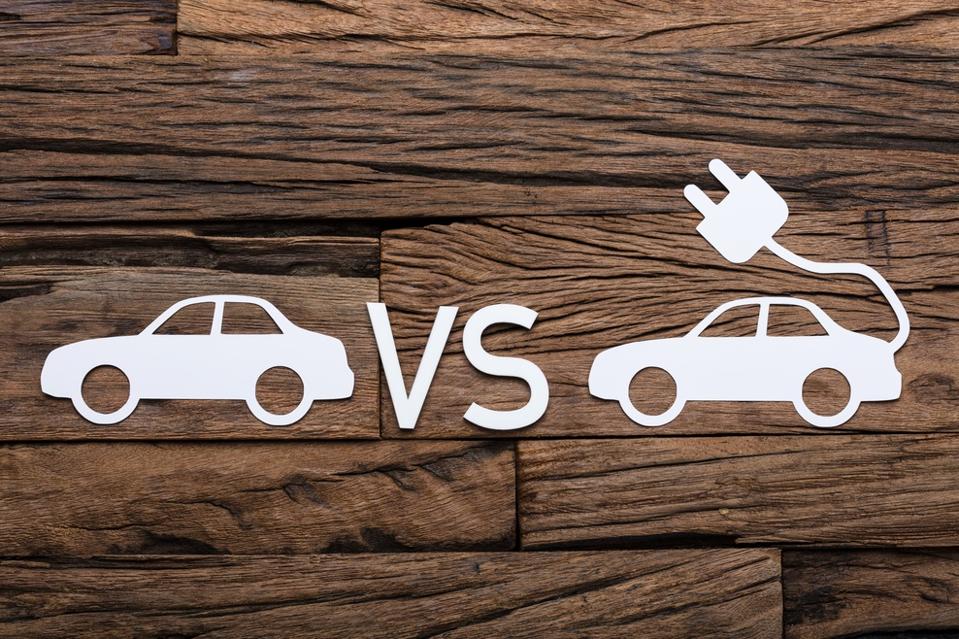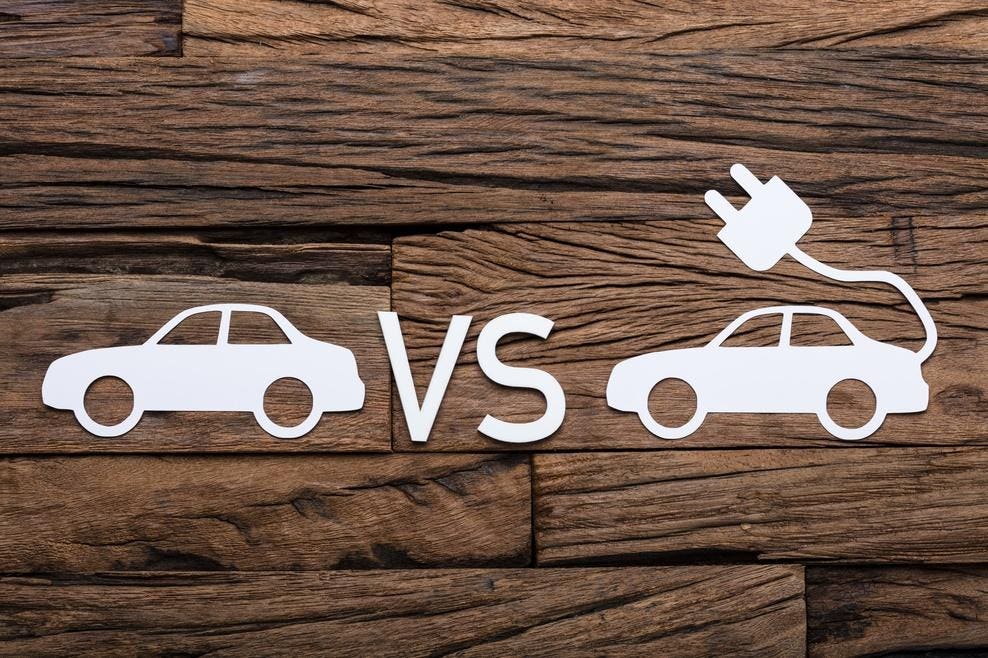
Ice versus EV
Getty
Any other new car that was purchased by Americans in 2030 should be electric, but because the Trump administration is clearing EV -stimuli and goals, it is totally probably less than half of that and offers a life line for vehicles and hybrids with gas
That is an unexpected new life for life for people such as GM, Ford and Stellantis brands such as Chrysler, Dodge, Jeep and Ram and their combustion technology. They were highly dependent on internal combustion engines and were slow or reluctant to embrace EVs.
A combination of reversing tax credit, delays from the emission standards and removing the BIDEN administration and the call for a 50% share for EVs in the new car market in 2030 is a boost for ice. Manufacturers will also press the production of hybrids, plug-in hybrids and extensive electric vehicles*.
Consultants Roland Berger put it in a recent report.
“Delayed acceptance of Bevs (EVs) will have step-by-step effects on the entire value chain of the automotive, extending the profitability for electrification-oriented players and expanding the window of opportunities for ice-oriented legacy players,” the report said.
Analysts are asked to lower their predictions for the American EV turnover in 2030. Investmentbank UBS says that EVs will only reach 24% of the new car market or 2.7 million vehicles. Four months ago, UBS predicted 32%. US EV market share is currently around 10%. Bloombergnef now predicts 27%, a decrease of almost 48%. Investment researcher Jefferies is even lower at around 20% together with Roland Berger. Roland Berger projected around 40% under the Biden watch.
EV -Sales forecast for 2030 halved
“Actions of the Trump administration To release the emission standards of the light vehicle, our prediction for the acceptance of the American electric vehicles effectively halved in 2030 -we now expect only about 20% BEM -sale by 2030,” said Brandon Boyle, Senior Partner and Americas Automotive Lead at Roland Berger.
This greatly compares the ambitions of Europe. The European Union has determined EV sales, by 2030 will reach around 80% of the new vehicle sales on its way to 100% by 2035. Given the current market share is hardly 20% in Europe, there is a number of great modest pie eating on the cards.
The Mazda MX-30 R-EV is an electric vehicle with extensive range equipped with a small rotating gasoline … More
Getty Images / Sjoerd van der Wal
“The American market has a different dynamic (than Europe): more rural driving, less dense urban cores and a political environment that could shift, depending on the 2028 elections,” said Curt Hopkins, CEO of MCQ Markets. MCQ Market says it is a fintech company that makes assets of high value accessible and investable.
“I would not call it a comeback for ice, but it is also not going away at night. Hybrids and plug-in hybrids are still much part of the transition, especially for consumers who are not completely ready for a full battery-electric experience. Expect to play a meaningful but gradually shrinking role due to the decade,” Hopkins said.
Bernstein research analyst Daniel Roeska said at some point that EV's question will accelerate again. Maybe after the 2028 or 2030 elections.
“The (expectation) won't be 50% for long,” said Roeska in an interview.
“(General Motors, Ford and Stellantis) agreed that the American electrification will take much longer. Even if the target of a high EV -share in the US has not been changed, (manufacturers) are awake with the fact that they must improve the profitability of EV without considerable volume growth and investments in Legacy products,” said in a Legacy products said in a Legacy products said in a Legacy products, “said in Legacy products,” said in Legacy products in Legacy Products, “said in Legacy products in Legacy Products longer,” “said in Legacy products in Legacy products in Legacy products in Legacy Products.
Difficult to bet against Tesla
Tesla is the current EV market leader and despite a huge increase in competition and the lower expectations for the total market, it is expected that his transfer, MCQ's Hopkins said.
“It's hard to bet against Tesla. They are vertically integrated, have a dominant brand and continue to lead to software and over-the-air updates. As long as they retain that pace of innovation, they will probably still be the American leader in 2030,” Hopkins said.
According to Kelley Blue Book, the Tesla model Y led the US EV market in 2024 with the turnover of 373,000 and a market share of 28.6%, the Tesla Model 3 was the following with 190,000 (14.6%). Then the Ford Mustang Mach-E came with 52,000 or 4.0%.
“That said, keep an eye on some dark horses. Chinese car manufacturers such as BYD and NIO become serious about international expansion, and if trade policy allows it, they can become a factor in the US towards the end of the decade.”
The fully electric Ford Mustang Mach-E (photo by Josh Lefkowitz/Getty Images)
Getty images
“Under the Legacy -car manufacturers, Ford, GM and Volkswagen have all shown real progress. Their ability to scale EV production and use existing dealer networks can help them close the gap, especially because more affordable models come on the market,” says Hopkins.
Twice the power, half the weight, half the costs
He does not expect a game-changing battery technology before 2030, only incremental improvements in the battery design. The long promised Solid-State battery revolution- twice as far, half of the weight, half of the cost- is not close because researchers stumble over mass production techniques.
And the problem is that as consumers hear about this enormous, threatening improvement, they are probably on their guard to buy an EV and the risk of torpedoing the remaining value through game-changing technology. That could raise the skids as 2030 approaches.
More bad news for EV makers came this week, thanks to a study among 15,000 drivers around the world through oil giant scale. The research showed that drivers in America are reluctant to switch to EVs of ICE vehicles. Those considering switching fell three percentage points to 31% compared to a year ago. In Europe, the reluctance was more ominous considering the massive EV goals set before 2030. According to the survey, 41% said they would consider switching to an EV, against 48% last year. Shell has 75,000 charging points around the world, including the US, Europe and China.
*(Hybrids use computer power to combine for maximum efficiency with gasoline engines, and have relatively small batteries. They may only offer 1 mile only electric driving. PHEVs have larger batteries that can be charged independently and can offer up to 75 miles of electric transport. Electricity.)
